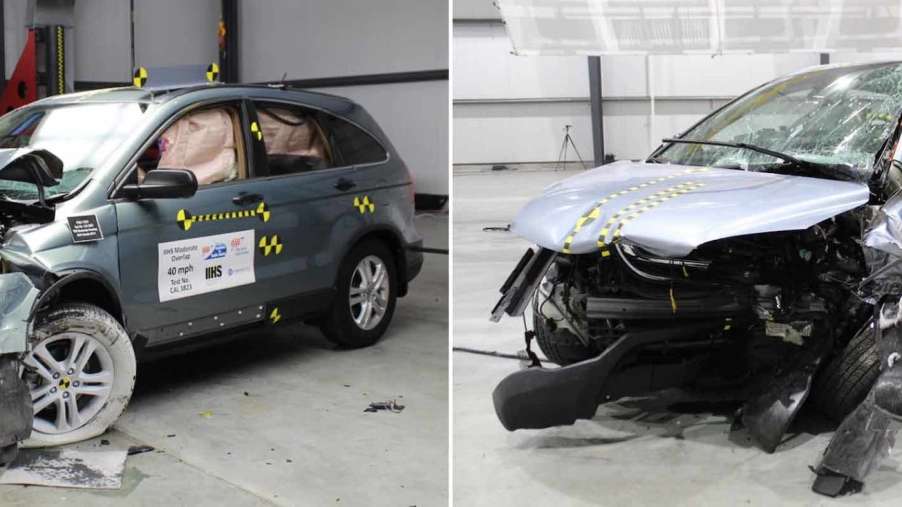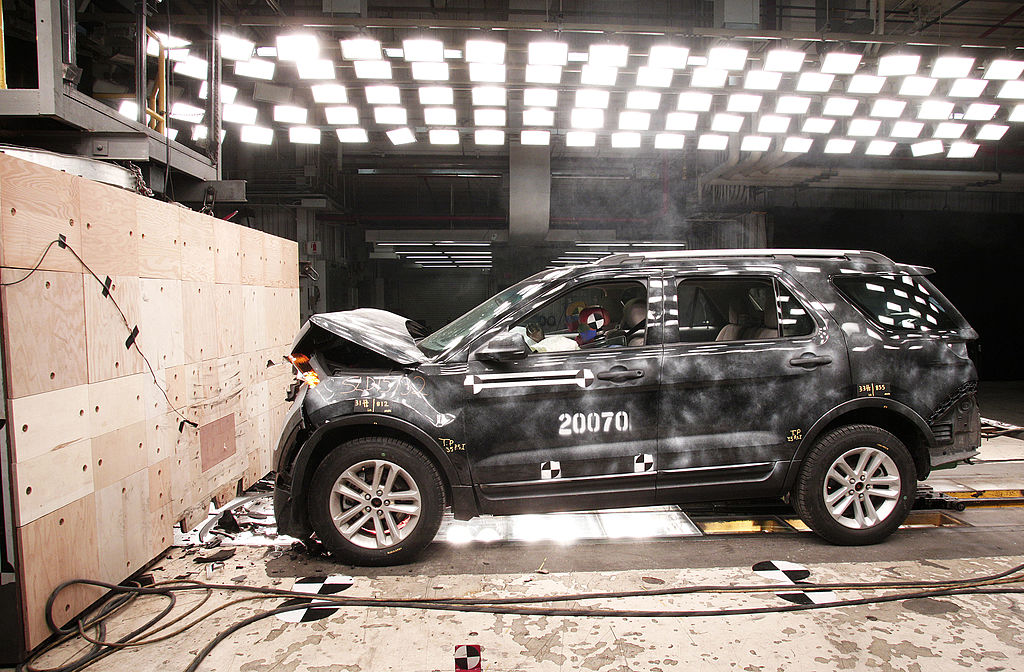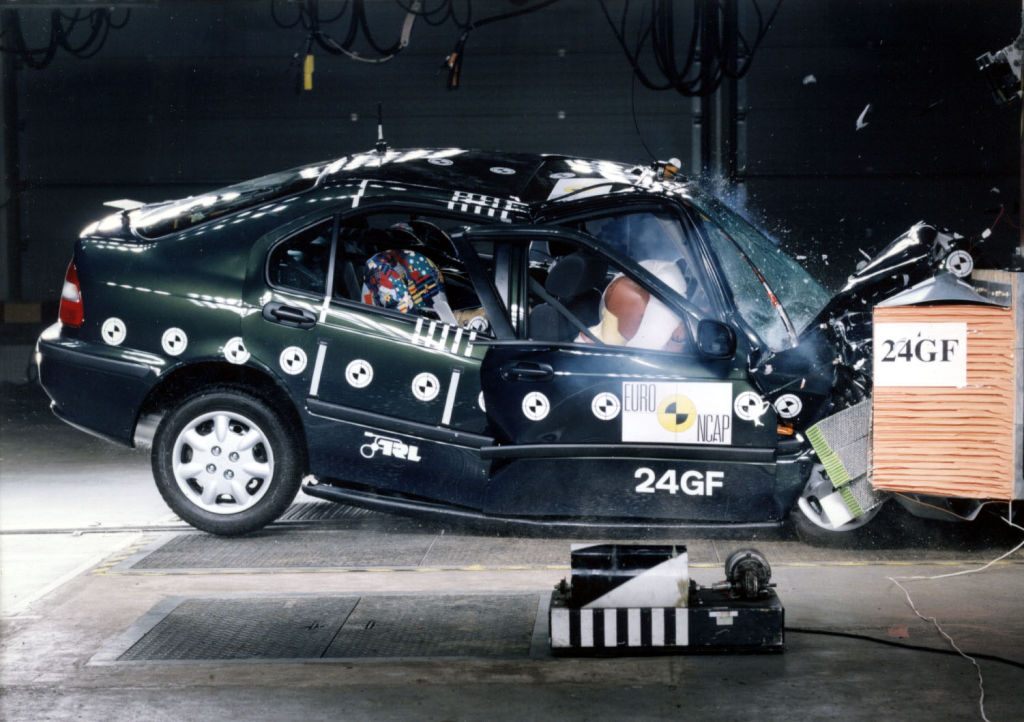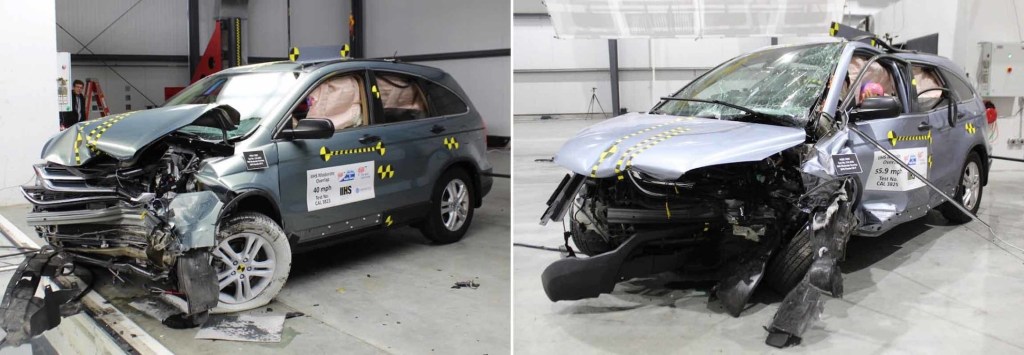
Your Car’s Safety Rating Might Be Worthless at Highway Speed
Obviously, the faster you drive, the less safe you’ll be if you crash. This is an easy concept to understand. Think about SUVs. The faster you go, the easier it is to roll them over. These days car manufacturers go to extreme lengths to make sure cars are safer, but most importantly, to make sure they appear safe. This isn’t malicious or sneaky; it’s just good sales. Well, studies show that no matter how good your car’s safety rating is, there is a threshold where it doesn’t matter – and it’s lower than you think.
What does my car’s safety rating mean?
According to Consumer Reports, our car’s safety rating doesn’t mean quite as much as we thought. A new study shows that only a few miles an hour faster can make a crash much more dangerous than the safety ratings would have us think.
The Government and private organizations rate a car’s safety based on a set of criteria. These things can be beneficial as consumer advice when trying to decide on what to buy. The study explains that most safety ratings are based on tests at 35 mph. If you have ever crashed a car, you probably understand that 35 mph is generally much less traumatic than one at 55 mph.

These tests do range, but a crash test at 35 mph is simply not that useful for safety metrics. Most of the driving we do is faster than that. Think about being on a road trip and cruising along at 70 mph. That is literally 2x the speeds that many car’s safety ratings are based on.
Should we be testing cars at higher speeds?
Not necessarily. Joe Young, a spokesperson for IIHS, said, “At first glance, increasing crash-test speeds sounds like a good way to improve the design, but it actually could have unintended consequences. Stiffer structures required to perform well at higher speeds might actually make lower-speed crashes more dangerous since crumple zones wouldn’t engage as well.” This seems like quite the pickle.

Lowering interstate speeds is also not the solution, according to the IIHS. This raises other concerns about how crashes might occur in those settings that could lead to disastrous results. However, the IIHS is a bit of a buzzkill by suggesting that some states have let their speed limits get out of control. “We know that changes to the state speed limit have a direct effect on fatalities,” Young says, “yet states continue to raise them.”
Are cars safer today than they were in the past?
Of course, they are. All modern driver aids like lane departure warnings, automatic emergency braking, and blind-spot monitoring all help drivers avoid crashes altogether. However, we still have the problem of what happens when a crash does happen.

Jennifer Stockburger, director of operations at CR’s Auto Test Center, said it like this, “This study shows that speed has a significant effect on the level of injury vehicle occupants may sustain,” she says. “So even if these systems can’t prevent the crash entirely if they are successful in prompting an earlier reaction from the driver or vehicle that reduces the speed of the vehicle at the time of impact, they will provide benefits.”
The point is made clear by a test on a Honda CR-V. At 40 mph, the driver’s position wasn’t deformed or overly damaged, which is key in keeping the driver safe. This earned the CR-V a “good” rating from the IIHS. When they increased the speed to only 50 mph, the crash got much worse. The cabin is distorted and damaged heavily. At 55 mph, the crash test dummy’s head is sticking out of a heavily damaged and twisted and suggested a high likely hood of head and neck injuries.
You see the damage ramps up at what feels like a nearly exponential rate. We aren’t talking about 100 mph. This is still 15 mph slower than most interstate speed limits. The automotive industry has made tons of progress in helping drivers avoid crashes but still has a long way to go to make the inevitable crashes safer.



